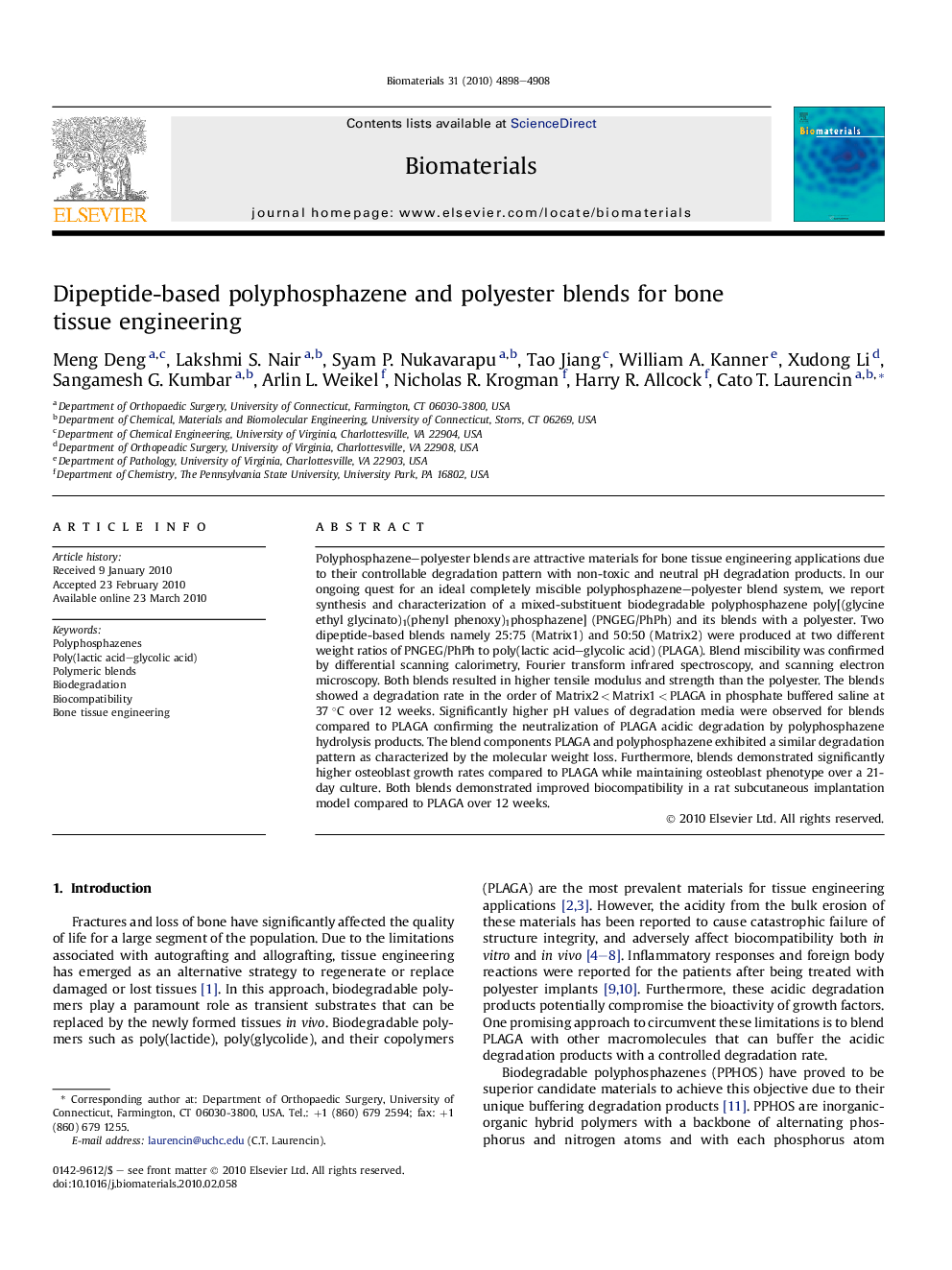| Article ID | Journal | Published Year | Pages | File Type |
|---|---|---|---|---|
| 10229897 | Biomaterials | 2010 | 11 Pages |
Abstract
Polyphosphazene-polyester blends are attractive materials for bone tissue engineering applications due to their controllable degradation pattern with non-toxic and neutral pH degradation products. In our ongoing quest for an ideal completely miscible polyphosphazene-polyester blend system, we report synthesis and characterization of a mixed-substituent biodegradable polyphosphazene poly[(glycine ethyl glycinato)1(phenyl phenoxy)1phosphazene] (PNGEG/PhPh) and its blends with a polyester. Two dipeptide-based blends namely 25:75 (Matrix1) and 50:50 (Matrix2) were produced at two different weight ratios of PNGEG/PhPh to poly(lactic acid-glycolic acid) (PLAGA). Blend miscibility was confirmed by differential scanning calorimetry, Fourier transform infrared spectroscopy, and scanning electron microscopy. Both blends resulted in higher tensile modulus and strength than the polyester. The blends showed a degradation rate in the order of Matrix2 < Matrix1 < PLAGA in phosphate buffered saline at 37 °C over 12 weeks. Significantly higher pH values of degradation media were observed for blends compared to PLAGA confirming the neutralization of PLAGA acidic degradation by polyphosphazene hydrolysis products. The blend components PLAGA and polyphosphazene exhibited a similar degradation pattern as characterized by the molecular weight loss. Furthermore, blends demonstrated significantly higher osteoblast growth rates compared to PLAGA while maintaining osteoblast phenotype over a 21-day culture. Both blends demonstrated improved biocompatibility in a rat subcutaneous implantation model compared to PLAGA over 12 weeks.
Related Topics
Physical Sciences and Engineering
Chemical Engineering
Bioengineering
Authors
Meng Deng, Lakshmi S. Nair, Syam P. Nukavarapu, Tao Jiang, William A. Kanner, Xudong Li, Sangamesh G. Kumbar, Arlin L. Weikel, Nicholas R. Krogman, Harry R. Allcock, Cato T. Laurencin,
